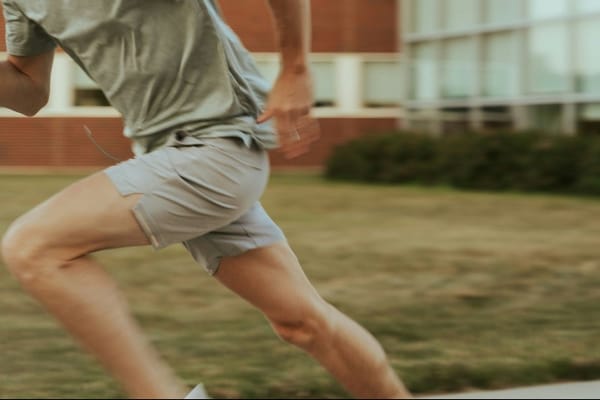For many, finding the motivation to exercise regularly can be a significant challenge. Some people naturally love working out, while others struggle to muster the enthusiasm. But what if there was a way to "switch on" the desire to exercise? Recent research from Spain's National Cancer Research Centre has uncovered a potential biological mechanism that could revolutionize how we approach fitness motivation, especially for those who find it difficult to maintain an active lifestyle.
Key Takeaways:
- Scientists have identified proteins in muscles that can activate the desire for exercise.
- The p38 protein plays a crucial role, with different variants acting as accelerators or brakes for exercise motivation.
- Interleukin-15 (IL-15) emerges as a key player in increasing the drive to exercise.
- People with obesity tend to have lower levels of IL-15, potentially explaining reduced exercise motivation.
- This research could lead to new strategies for improving exercise adherence, particularly for those struggling with obesity.
The Science Behind Exercise Motivation
Have you ever wondered why some people seem to love exercising while others dread it? The answer might lie in our muscles, and not just in the way you might think. Scientists have discovered that our muscles don't just move us around – they also send chemical signals that can affect our desire to exercise[1].
The Role of Skeletal Muscles
Researchers have found that our skeletal muscles are more than just the engines of movement. They're actually complex organs that produce and release substances called myokines. These myokines act like messengers, communicating with other parts of our body and influencing how we feel about exercise[1].
The p38 Protein: A Key Player
At the heart of this discovery is a protein called p38. This protein comes in four different "flavors" – a, b, d, and g. When we exercise, two of these flavors, p38a and p38g, become active in our muscles[1].
The Accelerator and the Brake Interestingly, these two versions of p38 seem to have opposite effects:
- p38g acts like an accelerator, increasing our desire to exercise
- p38a acts more like a brake, potentially reducing our enthusiasm for physical activity
This balance between p38g and p38a might help explain why some people naturally feel more drawn to exercise than others[1].
The IL-15 Connection
Another important player in this story is a substance called interleukin-15, or IL-15 for short. IL-15 is what scientists call a myokine – a chemical messenger produced by muscles[1].
How IL-15 Affects Exercise Motivation
When there's more IL-15 in the body, it seems to increase activity in the part of the brain that controls movement. This leads to more spontaneous physical activity – in other words, people (and mice in the study) feel more inclined to move around and exercise[1].
The Link to Obesity
In an interesting twist, researchers found that people with obesity tend to have lower levels of IL-15 in their blood. This could help explain why some individuals with obesity might find it harder to feel motivated to exercise[1].
From Mice to Humans: What the Research Shows
To understand how all these pieces fit together, scientists conducted experiments with both mice and humans. Here's what they found:
- Mice without the p38a protein were leaner, had better glucose metabolism, and were better at exercising than regular mice[1].
- These mice also had higher levels of IL-15[1].
- When researchers increased p38g in mice, the animals became much more active[1].
- In human subjects, both p38a and p38g became active during exercise[1].
- After intense exercise, both mice and humans showed increased levels of p38g and IL-15[1].
Potential Future Applications
This research opens up exciting possibilities for helping people who struggle with exercise motivation:
- Personalized Exercise Programs: Understanding an individual's IL-15 levels could help trainers design more effective workout routines[1].
- New Medications: There's potential for developing drugs that could increase IL-15 levels, particularly for people with obesity who might benefit most from increased physical activity[1].
- Better Understanding of Exercise Types: Different forms of exercise might stimulate the p38 and IL-15 pathways differently. This could lead to more tailored exercise recommendations[1].
What This Means for You
While this research is still in its early stages, it offers hope for anyone who has ever struggled to find the motivation to exercise. It suggests that our desire (or lack thereof) for physical activity isn't just about willpower – there are biological factors at play.
For now, if you find exercise challenging, remember that you're not alone, and it's not necessarily a lack of discipline. Your body's chemistry plays a significant role. As this research progresses, we may see new strategies emerge to help everyone find their inner exercise enthusiast.
Conclusion
The discovery of this "exercise switch" in our muscles is a fascinating step forward in understanding why some people naturally gravitate towards physical activity while others struggle. It highlights the complex interplay between our muscles, brain, and overall health.
As research in this area continues, we may see new approaches to tackling obesity and improving overall health through increased physical activity. Whether through personalized exercise programs or potential new medications, the goal is to help everyone experience the numerous benefits of regular exercise.
Remember, every step counts. Even if you don't feel naturally inclined towards exercise, know that with each workout, you're not just building muscle – you're potentially flipping switches in your body that could make future exercise sessions more enjoyable and beneficial.
Citations:
[1] https://www.medicalrepublic.com.au/switching-on-the-drive-to-exercise/109903
[2] Remodeling p38 signaling in muscle controls locomotor activity via IL-15 | Science Advances














Member discussion